May 28, 2025
8 min

Approaches to EV chargers’ firmware testing constantly progress, but ensuring compatibility and compliance remains one of the biggest challenges. In turn, the complexity of this step causes the need for additional resources, both in terms of financial investment and workforce. The problem is diminished — if not eliminated — when you get the ideal testing environment, well-adjusted and fully verified. That is what TimeTick has to offer. Whether you need to accelerate EV charger development and certification or oversee maintenance and updates, the platform has everything you might need. Below, we’ll review a few particular issues we can help resolve, how exactly it is possible, and what results have TimeTick clients already achieved.
Whether you are managing a small or large-scale manufacturing line, firmware issues can lead to costly delays, compliance risks, and client dissatisfaction. So, for both EV charger manufacturers and operators, and regardless of the number of chargers, it is important to ensure that the system works steadily and consistently, especially after the updates. We at TimeTick know what problems may arise and have solutions:
Aiming to help you overcome all these challenges, TimeTick provides a simulated environment that allows you to assess hardware and firmware simultaneously, making sure every element functions as expected and according to the latest protocols. Let’s explore this process and the platform’s features in more detail.
When you test your EV charger’s hardware or firmware through TimeTick, you use a simulation that mimics real-world conditions. You can evaluate whether firmware is integrated seamlessly with the backend and if there is a risk for an update to cause service disruptions or violate compliance.
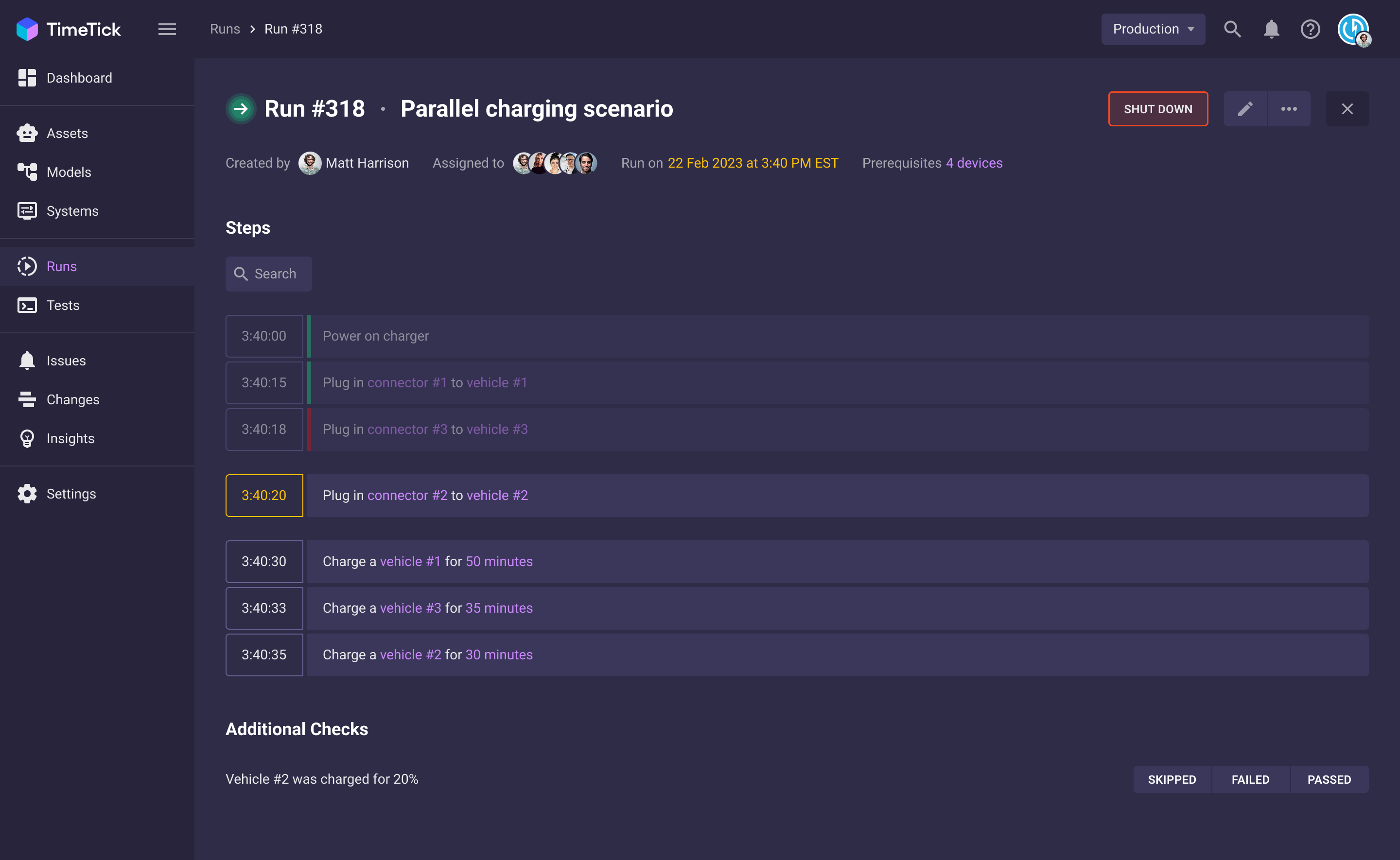
In general, you go through the following steps:
You can also test the firmware faster across various scenarios, ensuring the accuracy of its performance in any situation.
The reliability of the testing environment will directly affect the reliability of the firmware itself. So, when running the tests using a correctly optimized cloud, you can identify all the gaps between the expected and received responses to a variety of commands.
TimeTick offers not just realistic but also fully compliant testing conditions. The platform is fully aligned with regulatory and industry standards for EV chargers, such as OCPP 2.0.1, and is regularly updated. It means a significantly higher possibility to get OCPP certified on the first try and get ready for market deployment.
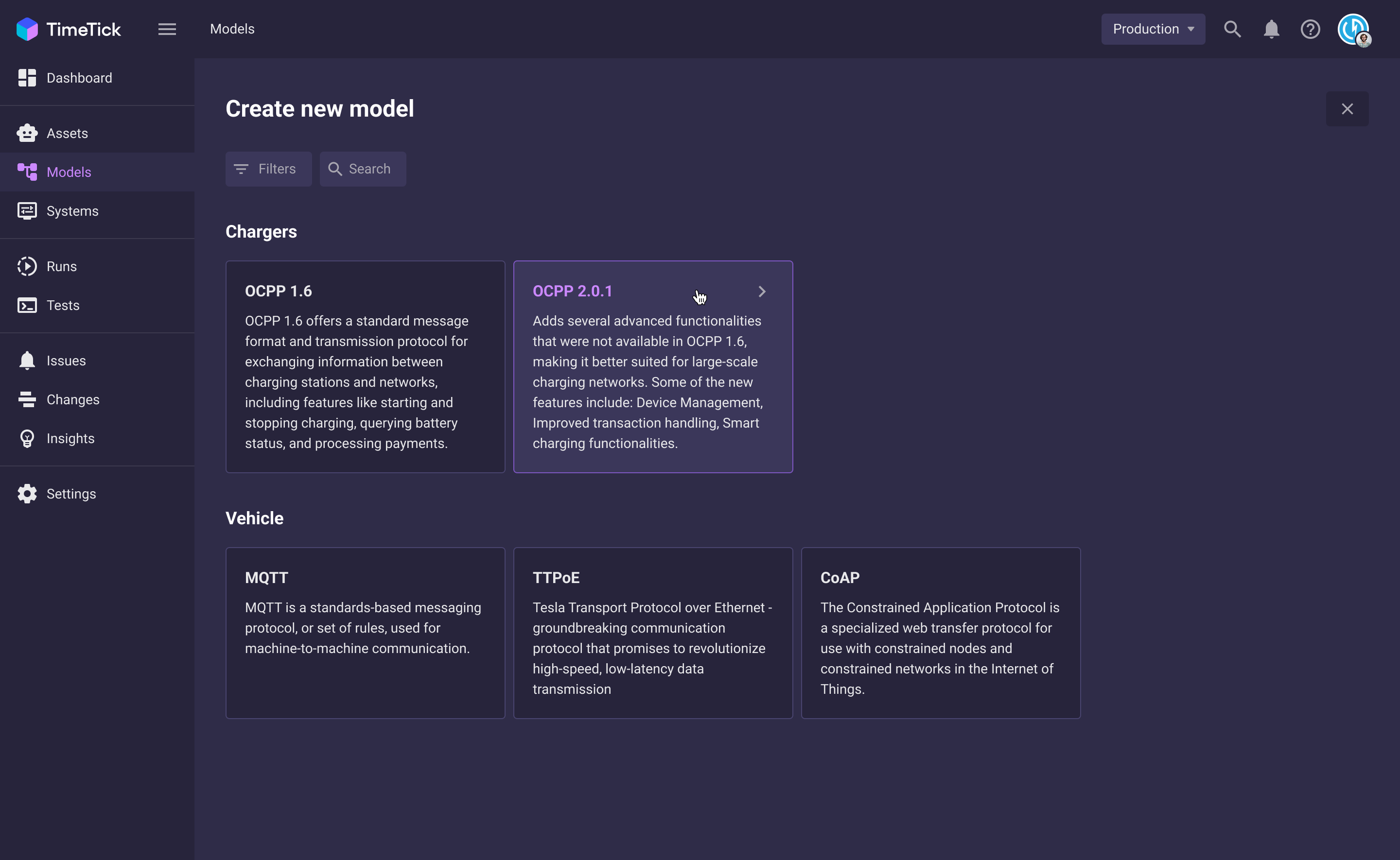
TimeTick can save a significant amount of time that differs from one process to another. For example:
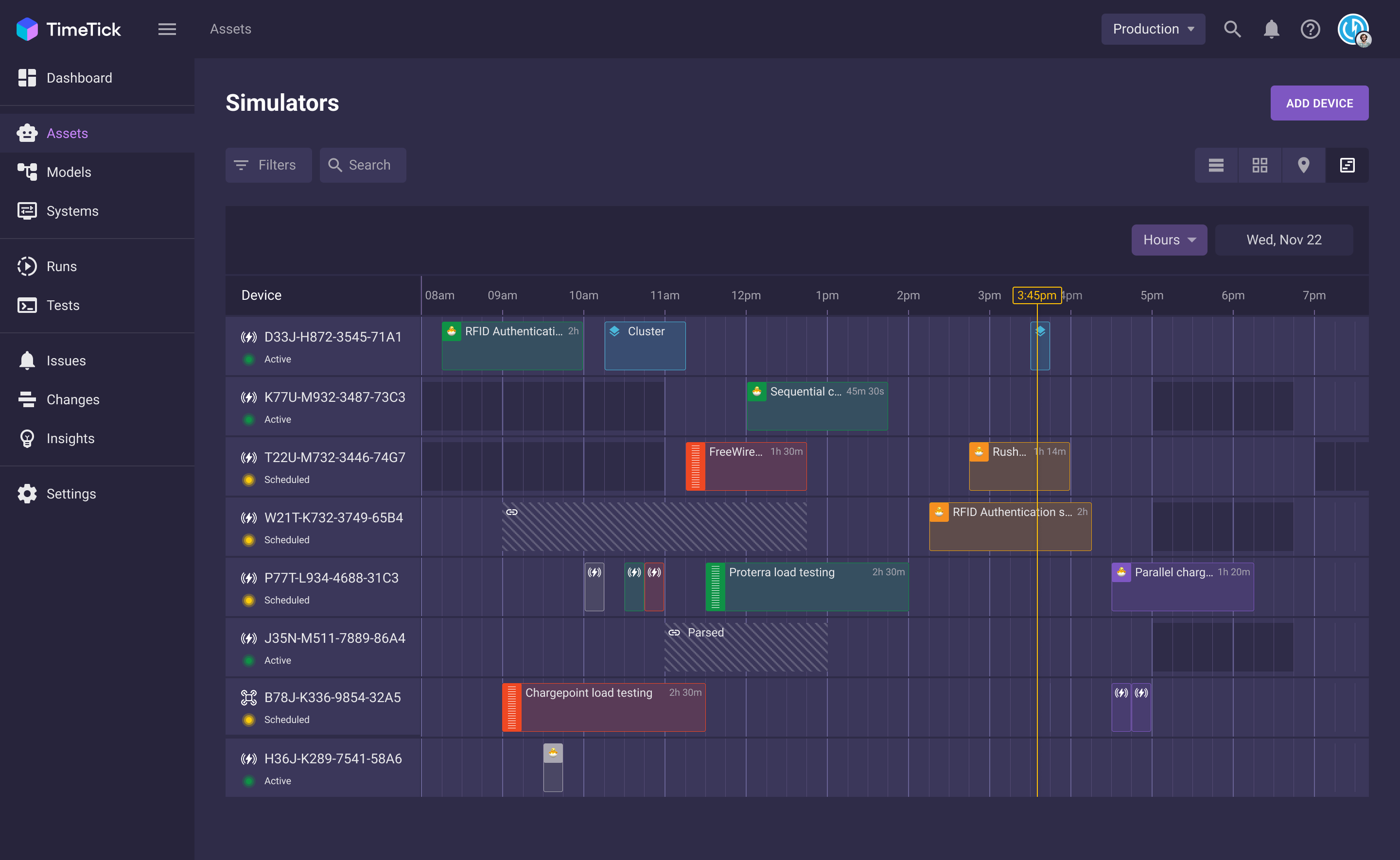
In addition, some processes only become possible with TimeTick. For instance, it was impossible for a client to run stress tests because of an insufficient number of available chargers — now, it takes 4-5 hours to set up and test them. Complex test scenarios were also almost impossible to execute due to the excessive amount of time needed to review logs; with TimeTick, it takes only 3-4 hours from the setup to getting detailed and analyzed results. This approach reduces manual effort and allows the team to focus on more important tasks rather than repetitive, tedious work.
Saved time directly and indirectly helps save other resources. By automating QA workflows for standard and complex testing, our clients save $10k to $30k monthly:
It becomes possible to reallocate resources to higher-priority tasks, create demo environments faster, and reduce the number of cases where customer support is needed.
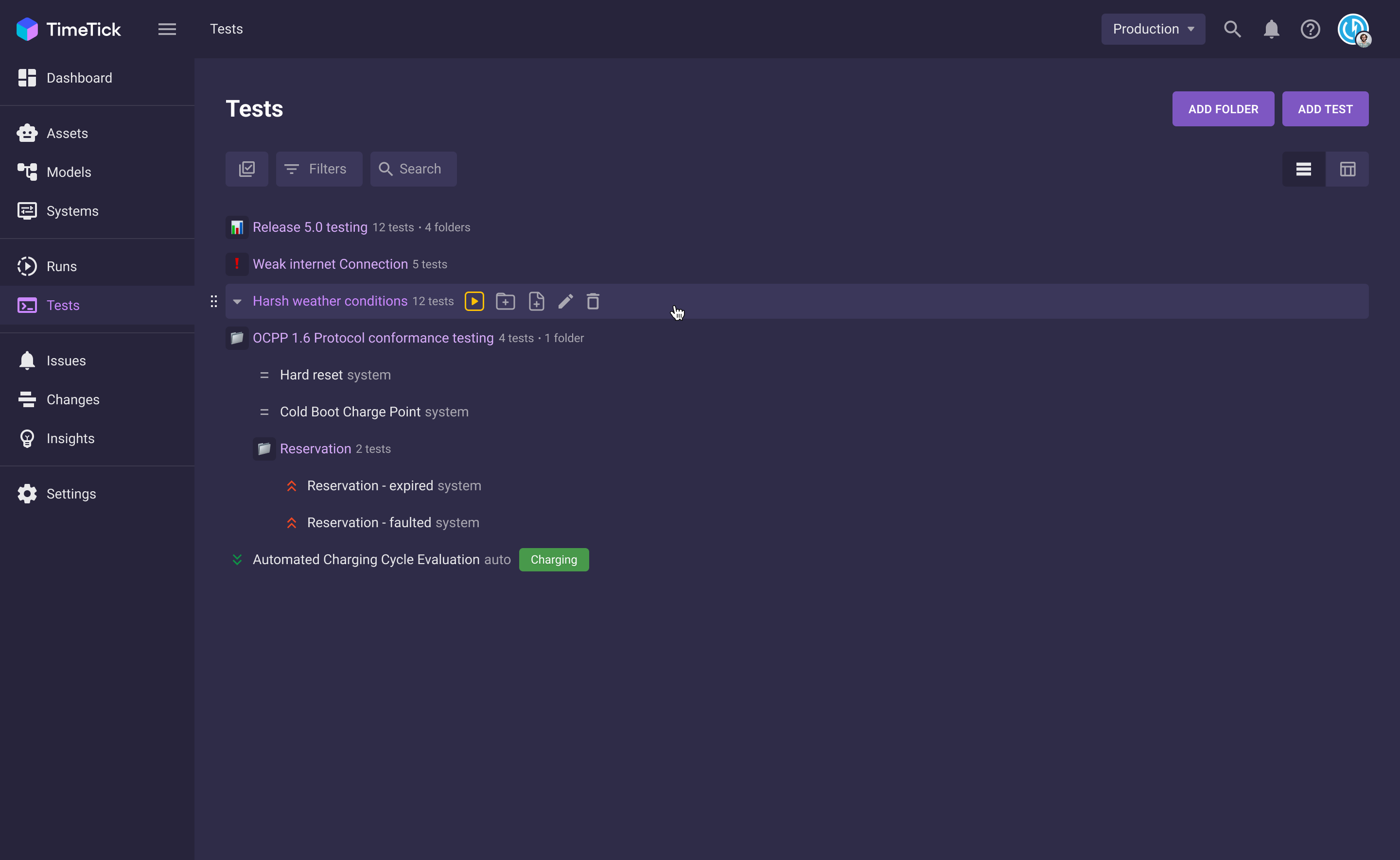
All this results in the economy of remuneration and team maintenance, and at the same time, you ensure the scalability of the testing process. For example, you save resources on setting up the lab environment and make more scenarios feasible: it is possible to test 300+ rules on 20+ chargers, which would be impossible to perform manually in a lab.
A human factor can influence any step of the testing process, from inaccurate setup to missing the fact that incorrect data has arrived to difficulty finding each and every error in an abundance of correct responses to commands.
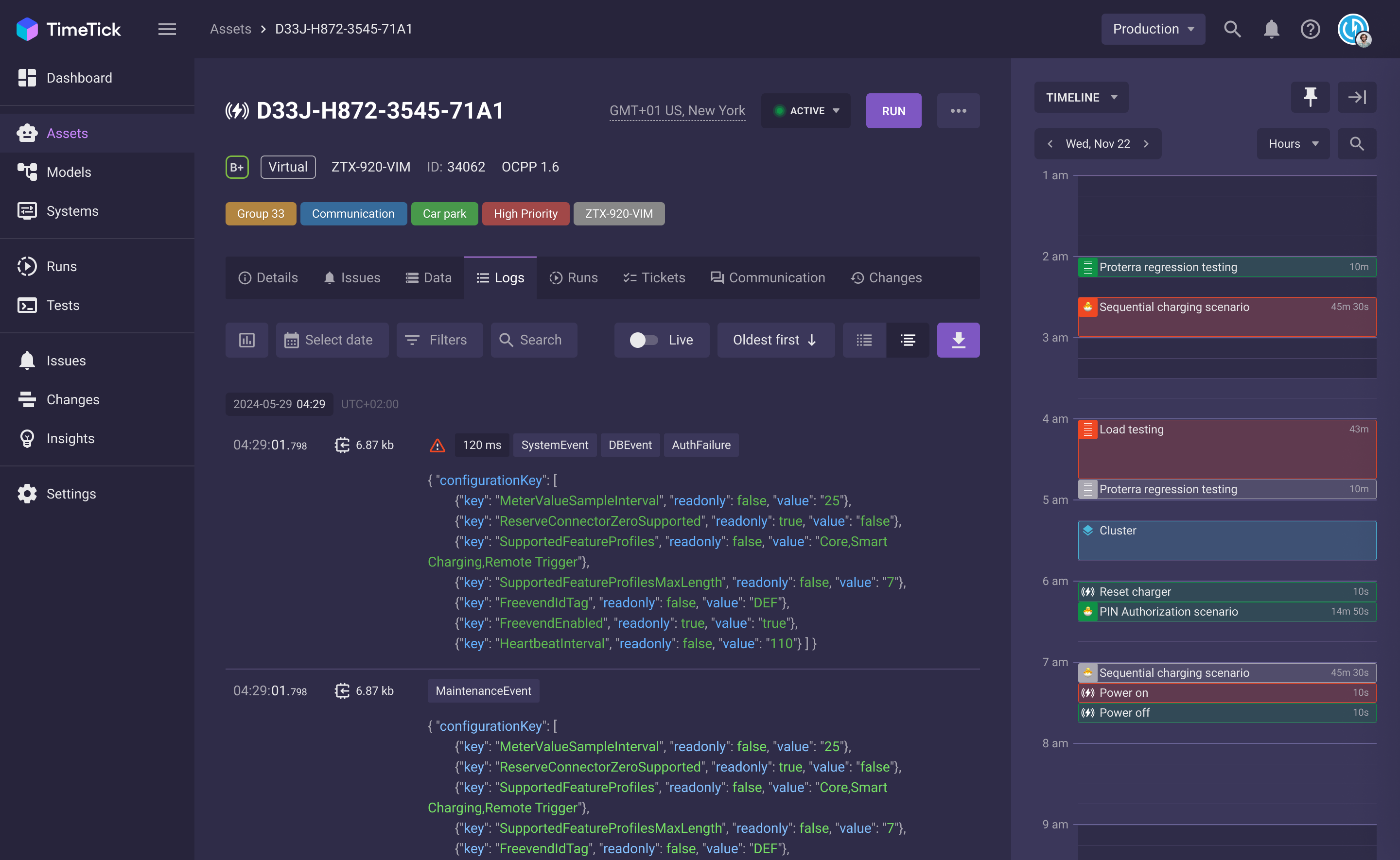
Also, the platform reduces the risk of the human factor during the development stage since there is no need for extensive scripting. The initial features already guarantee detailed testing of device functionality and quality before deployment.
Along with running multiple tests simultaneously, TimeTick identifies and highlights errors automatically, so testers don’t have to spend much time analyzing logs. In addition, you get improved bug detection; TimeTick’s client found six major and 10+ minor previously undetectable bugs that would have taken 3-5 days of HWQA time to uncover using real chargers. Error detection runs in real-time, instantly identifying problems across devices. All this is still possible when you monitor the entire system, including both hardware and software components.
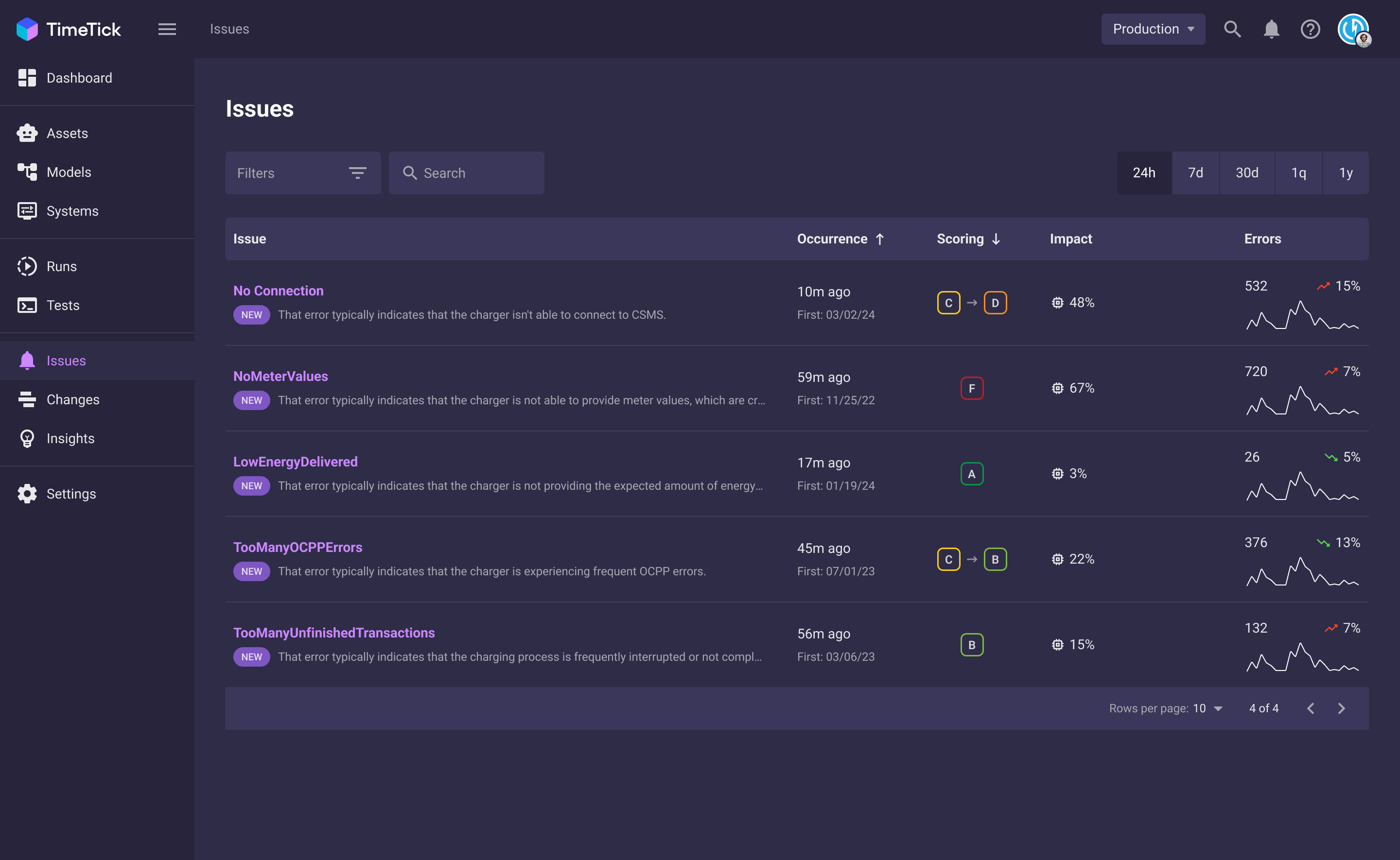
While the most common reason for using TimeTick is preparation for the OCPP certification, you can also run your own, customized tests. The process of setting up scenarios is intuitive, and all steps are even if it’s not a standard logic chain.
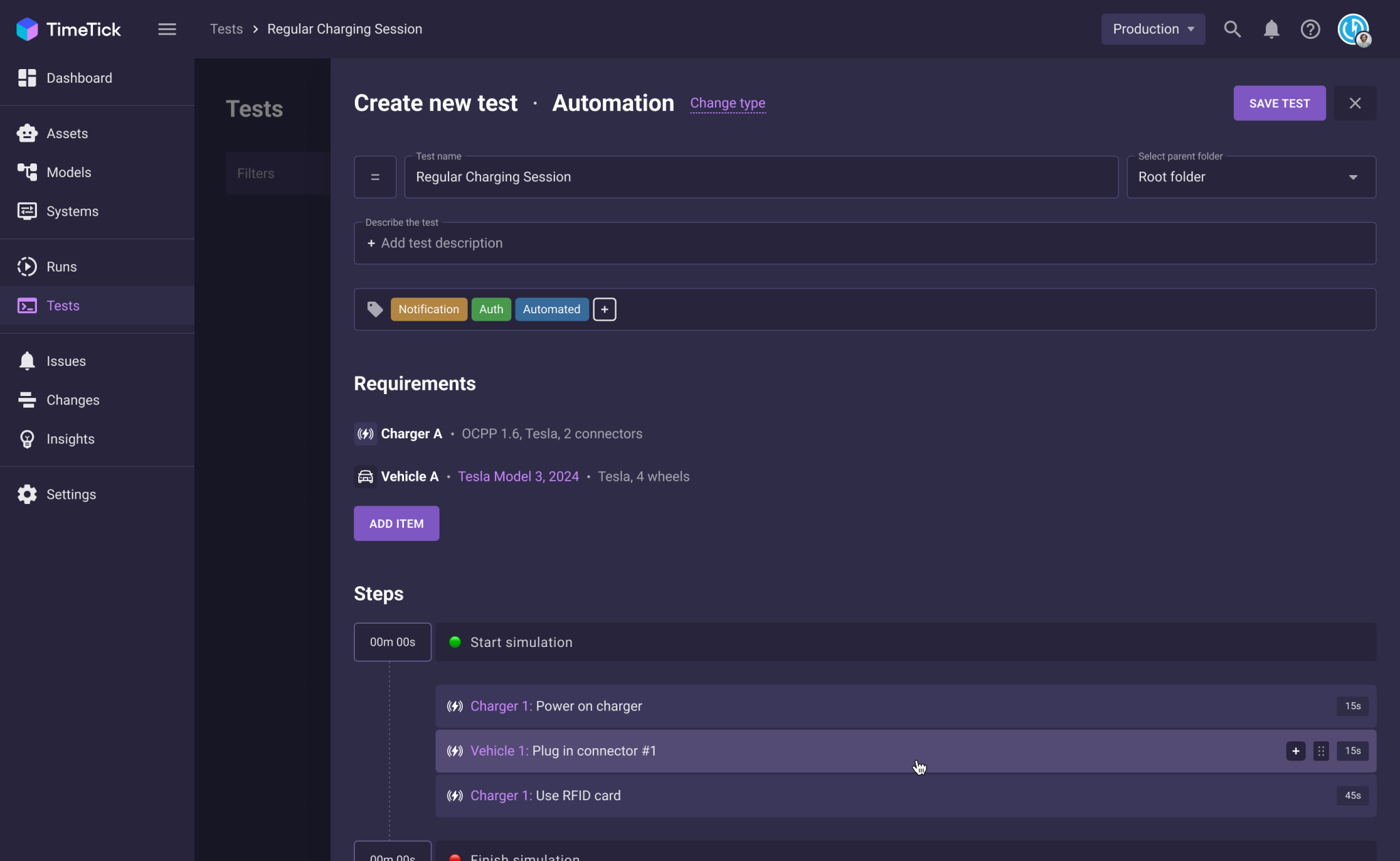
While checking compliance with certification requirements is the priority, TimeTick can pinpoint anomalies that may not be initially harmful but might cause problems in the future. For example, it can detect errors in the logic.
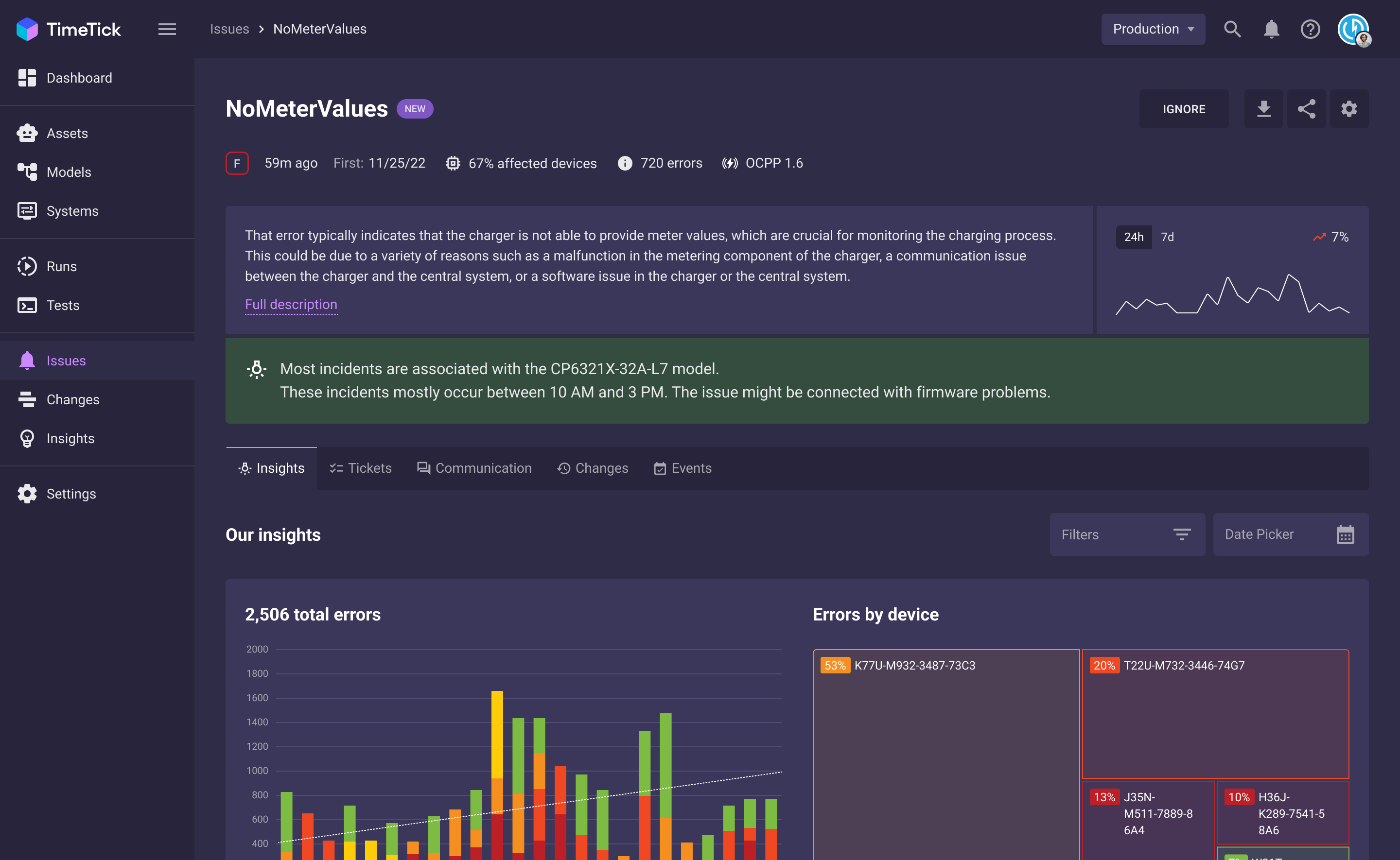
Example: data processing delay. Sometimes, an EV charger may function in a way that doesn’t violate any critical rules and requirements, although it is not working according to a protocol. For instance, it sends all the necessary data, but it takes a little longer than expected, with a delay of one or two seconds. This may not be a problem, but it may transform into one later or when combined with some other factors. Early awareness about such a delay allows for timely investigation and helps prevent issues during the upcoming updates.
To find some specific anomalies, your team would need to create complex scripts — TimeTick serves as such a script. It automates the comparison of the charger’s functions with a protocol, identifies anomalies and errors in logic, and creates clear reports.

Palina Leibinskaya
Palina has been driving innovation in IoT technology for over 12 years and is currently the CEO and Co-Founder of TimeTick. Previously, she founded a leading software vendor specializing in high-load IoT solutions for Fortune 500 companies, where she successfully led multiple deployments in the EVSE and fleet management sectors.
We value an individualized approach, so we are here to discuss your roadblocks and pain points to understand how TimeTick can help in your situation. Contact us to book a call!